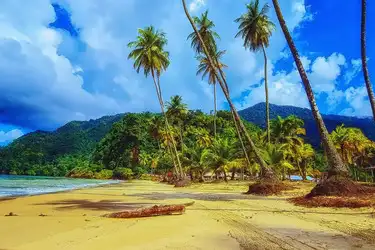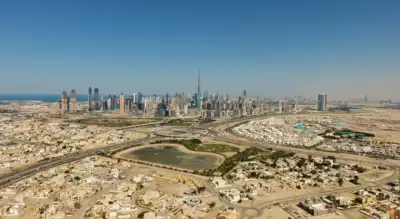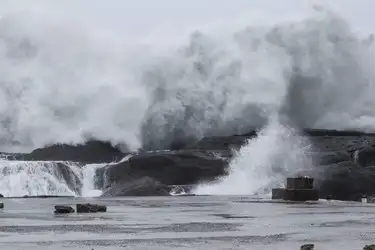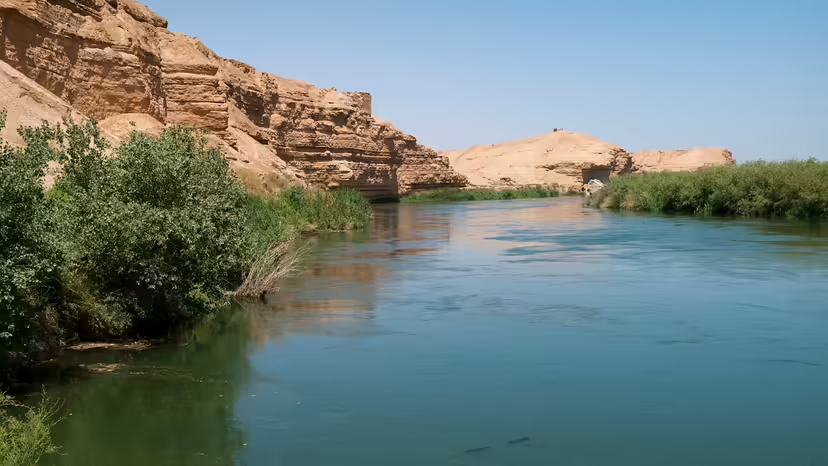The Mystery Behind UAE’s Water Supply
If you’ve ever visited the UAE, you’ll notice one thing — it’s a dry, sun-soaked land surrounded by golden deserts, shimmering skyscrapers, and endless coastline. But here’s a fact that surprises most people: the UAE has no rivers, no permanent lakes, and no major natural freshwater sources.
And yet, millions of residents, tourists, and businesses enjoy a steady, uninterrupted supply of clean water every single day. From luxury hotels and massive malls to family homes and green parks, water flows as if nature gifted this desert nation a hidden spring.
So how does a country with no rivers or lakes manage to quench the thirst of millions? The answer is a fascinating story of human ingenuity, resilience, and futuristic technology.

Life in a Land Without Rivers
It’s almost unthinkable for many nations, where rivers, lakes, and rainfall form the backbone of their water systems. In the UAE, however, nature wasn’t quite as generous. The country gets minimal rainfall annually, and temperatures often soar past 45°C in the summer months.
Without traditional water sources, life could have been harsh, limiting, and difficult. But the UAE has always been a land of ambition, refusing to accept limitations set by geography. What could have been a crippling disadvantage turned into an opportunity for innovation and global leadership in water sustainability.
Desalination: Turning Saltwater Into Sweet Water
The heart of the UAE’s water story lies in a groundbreaking process called desalination. Since freshwater rivers and lakes aren’t an option, the UAE taps into its most abundant natural resource — the sea.
Surrounded by the waters of the Arabian Gulf and the Gulf of Oman, the UAE uses state-of-the-art desalination plants to convert seawater into clean, drinkable water. The country operates some of the largest desalination plants in the world, providing up to 90% of its water needs through this method.
Desalination is a complex process, where salt and other minerals are removed from seawater through techniques like reverse osmosis or thermal distillation. The result? Crystal-clear, safe, and drinkable water flowing through taps, showers, and fountains across the nation.

How Does Desalination Work?
Imagine the UAE’s coastline as a giant water pantry. Seawater is drawn from the Arabian Gulf and transported to vast desalination facilities. Here’s a simplified breakdown of the process:
- Seawater Intake: Water is collected from the sea.
- Pretreatment: Large filters remove debris, sand, and marine organisms.
- Desalination Process:
- In reverse osmosis, water is forced through special membranes, separating the salt and impurities.
- In thermal desalination, water is heated into steam, leaving the salt behind, and then condensed back into freshwater.
- Post-treatment: Minerals are added back to balance the water’s quality for human consumption.
- Distribution: The clean water is then stored and pumped across cities, towns, and communities.
This cycle runs 24/7, ensuring a continuous supply of water, no matter how dry the season or how high the population grows.
Tapping into Ancient Wells and Groundwater
While desalination carries the bulk of the water load today, the UAE also uses groundwater wells for agricultural needs and emergency reserves.
For centuries, local Bedouins survived on underground water sources, accessed through hand-dug wells. Though these reserves are now limited and not suitable for drinking due to high salinity, they still play a role in supporting farms and green spaces.
The country has also preserved several ancient wells as heritage sites, reminding future generations of the struggles and ingenuity of their ancestors.
Imported Bottled Water: A Modern Convenience
In addition to desalination, bottled water imports from other countries help meet demand, particularly in premium hospitality sectors and during peak seasons. This has become a booming business, with global brands and luxury labels entering the UAE market, catering to tourists and residents alike.
While most daily needs are met by desalinated water, the option of imported bottled water adds convenience, variety, and a touch of luxury to the UAE’s water scene.
Greening the Desert: How Water Sustains City Life
What’s even more fascinating is how the UAE uses its water not just for survival, but to transform deserts into modern cities and lush landscapes.
Take a drive through Abu Dhabi or Dubai, and you’ll see manicured parks, tree-lined roads, golf courses, and botanical gardens — all thriving in the middle of the desert.
This is possible because of a meticulous network of water recycling systems. Wastewater is carefully treated and reused for irrigation, landscaping, and industrial cooling. This recycled water ensures that precious desalinated water is reserved for drinking, cooking, and personal use, while greenery continues to bloom in arid surroundings.

The Role of Smart Water Management
Water is life, but in a country where every drop counts, the UAE has developed sophisticated management systems to track, monitor, and optimize water use.
Modern technologies like smart meters, leak detection systems, and automated control centers have become standard in cities. These innovations help minimize water wastage and ensure efficient distribution to homes, hotels, and industries.
On a larger scale, government initiatives actively promote water conservation campaigns, encouraging residents and businesses to adopt mindful usage habits.
The UAE’s Vision for Water Security
Recognizing the challenges of climate change and rapid urbanization, the UAE isn’t resting on its achievements. The country has an ambitious plan for long-term water security, investing in:
- New desalination plants using renewable energy
- Advanced wastewater treatment facilities
- Cloud seeding programs to enhance rainfall
- Research into alternative water generation methods, like solar-powered desalination
This proactive approach positions the UAE as a global leader in sustainable water management, offering lessons for other water-scarce nations facing similar challenges.
Cloud Seeding: Calling the Rain
One of the UAE’s most intriguing water strategies is cloud seeding. This involves dispersing special salts into clouds to encourage rain formation.
While not a primary source of water, these artificial rains help boost groundwater reserves and green areas, particularly during hot and dry months. The UAE conducts dozens of cloud seeding missions every year, using small aircraft and sophisticated weather monitoring systems.
It’s yet another example of how the nation blends technology with nature to secure its future.
Life Lessons from the Desert
The UAE’s water success story is more than just an engineering marvel — it’s a reminder of what human determination can achieve. Faced with one of the harshest climates on earth and virtually no natural water sources, the country built a modern oasis through vision, innovation, and resilience.
It’s a testament to how nations can overcome natural limitations, provided they dare to dream big and invest in smart, sustainable solutions.
For visitors and residents alike, every glass of water in the UAE carries a story — not of rivers and lakes, but of oceans transformed, deserts conquered, and futures secured.
As the world grapples with increasing water scarcity, the UAE’s journey offers both inspiration and a roadmap for resilience in the face of adversity.

A Future Built on Water Wisdom
Looking ahead, the UAE’s water strategy continues to evolve. Plans are underway to power future desalination plants with solar and nuclear energy, further reducing environmental impact.
Eco-friendly innovations, public awareness programs, and international collaborations promise to keep the UAE’s cities hydrated and flourishing, despite nature’s challenges.
In a world where water crises are becoming more common, the UAE’s unbelievable achievement — supplying millions without rivers or lakes — stands as proof that with the right mindset and technology, nothing is impossible.
Follow us on instagram: UAE STORIES













